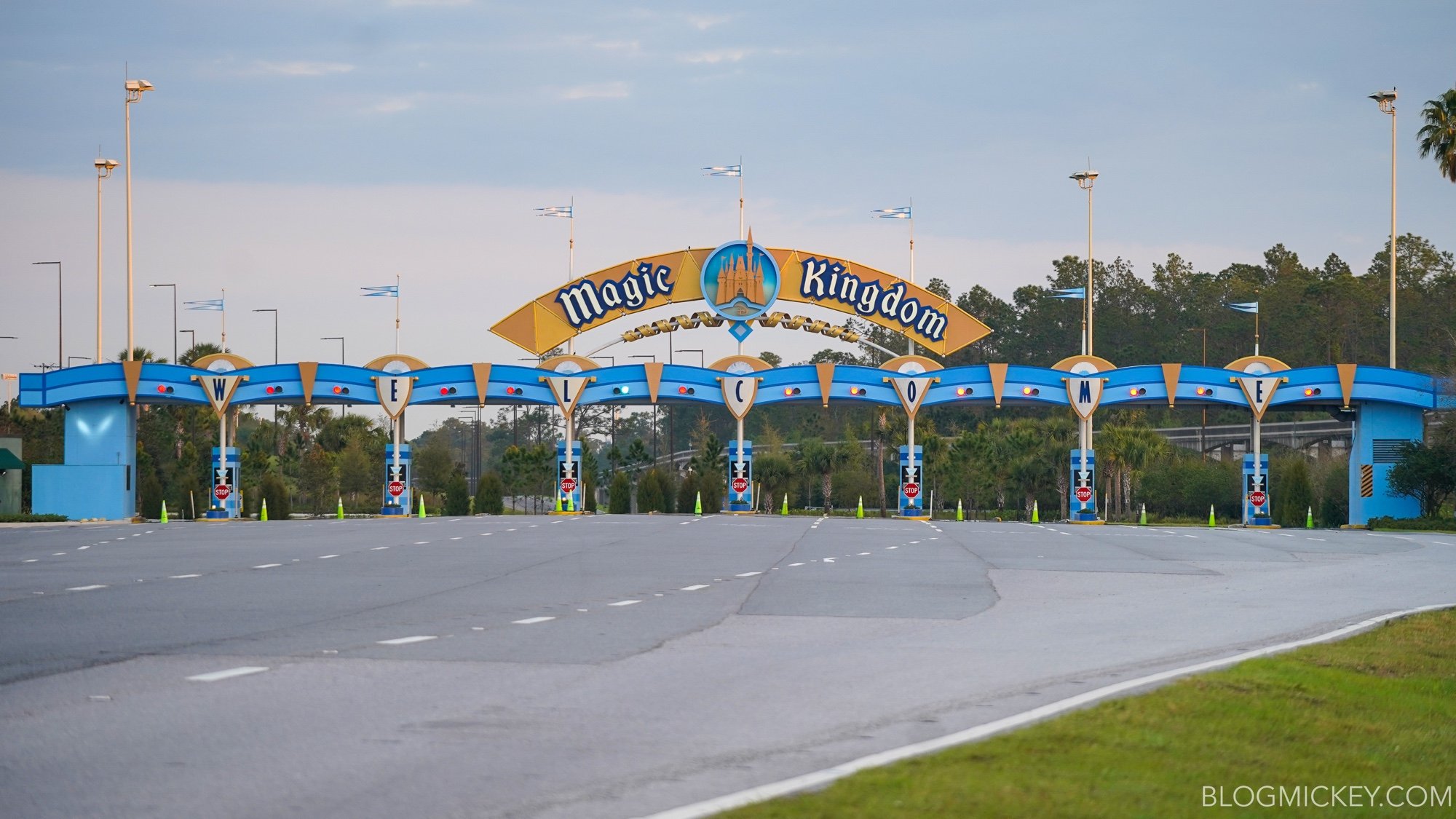A few things you left out... the finger print scanners aren't going to work on rubber gloves and who is going to want to touch a scanner that was touched by someone else?
Now think about when you go to a super market they will now wipe down the carts for you because again who wants to touch a cart handle that was held by someone else? Well if gloves are worn by all that isn't an issue with having to clean lap bars on every ride but on rides you would expect them to wipe down the seating area and place because it is going to be a petri dish of everything (not that it wasn't already) and that isn't going to be feasible on rides where the ride cars never stop moving or only pause for a few seconds to let out a rider.
Now to make things simple don't go by a 6 foot rule, it is easier to look at what 6 foot rule requires which is 144 square feet per guest. You get this by visualizing that a person standing in an open field is 6 feet from someone north of them 6 fee from someone south of them, east of them and west of them so thats a 12 foot square box, and 12 times 12 gives you 144 square feet so just find the total square feet in any area and that is the maximum number of people you would put there. You can use that to determine the capacity of areas by using google maps and their distancing feature when looking at MK. You can also use it to get rough estimate of the real capacity of the ferries which as 120 feet long and 35 feet wide, of course you need to cut make allowances for the front and rear loading areas on the ferries which aren't open to people during the ride which is about 10 fee on each end so you really have more like 100 by 35 foot area... don't assume any reduction for the stairways which are also off limits the reduction in capacity is still dramatic. 100 by 35 foot area is 3500 square feet which would allow 24 people... but a ferry has 2 levels so double it and you get 48 people per ferry which actually has a capacity of 600 people under normal operating conditions. Usually they run 2 ferries at a time so you normally have about a ten minute wait between ferries. So when you normally had 6 ferry trips taking guest per hour or 3600 people per hour.. .now you have a whopping 288 guests per hour. So to get the number of guests you could get from TTC to the main gate you would need more than 12 hours.. so basically the first 3600 guests that were going to use the ferries would still be waiting to go into the park when you had others leaving the park.
You can also use this 144 square feet number to make other rough estimates of the total park capacity... Measure the box created by the train tracks and you see its basically a 2250 foot square or 5,062,500 square feet which if an open field could with unusable areas would be able to hold a little over 35,000 people... but then we know the reality is a huge amount of the area is taken up by areas where a guest cannot go, such as river and water areas, kitchens, storage areas and ride areas that are off limits. Exactly how much of the area is off-limits is unknown but you could safely assume 50% though the reality is probably much closer to 75%... that means you really only have at best 17,000 or more likely 8,700 capacity. So could the park operate on that low of a capacity? Well about 15 years ago a special event had a max capacity of around 25,000. Disney was never going to plan to operate at a loss and probably assumed they would sell a certain percent of the tickets for any given event night. Say 70%... which means they were fine with 17,500 people guests. Which is
a higherthreshold than you get with a best case 17,000 people. Now consider that 15 years ago your costs were lower and the required number of people to cover costs is probably slightly higher... So is it likely Disney can exist with the lowered capacity? No.


